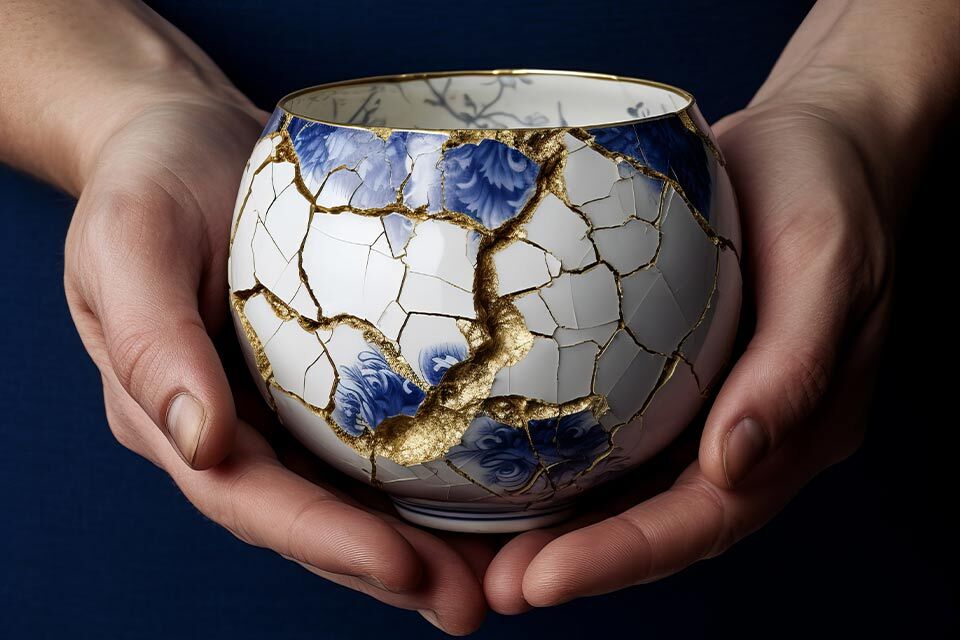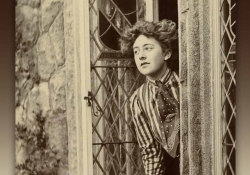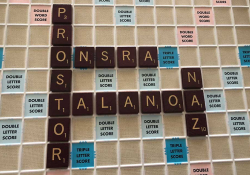Wabi-sabi and the Art of Imperfection

In her ongoing column of untranslatable words, Veronica Esposito considers the Japanese art of wabi-sabi and how its iconic image of an aged, cracked bowl that has been repaired connects with the art of translation.
Translation is known as an art of imperfection—it’s a cliché of the field that one can never quite get the translation exactly right. As the great translator John Ciardi once put it in a piece for the Saturday Review, translators labor at “the art of failure.”
As I have been poring through so-called untranslatable words for my column with World Literature Today, I have become more and more conversant in the reasons why translators never can get it just right (even if they can, at times, produce translations that might be in ways superior to the original). As I have seen more and more of the nuance that translators strive to capture as they try to move locutions from one language to another, I have found an untranslatable word that I think might be the translator’s true north, an embodiment of this impossible art. That word is the Japanese term wabi-sabi.
To begin about conversation of this age-old and fascinating term, we should first say that wabi-sabi is a very elusive concept: in his book Living Wabi-Sabi, the entertainer and author Taro Gold explains how Japanese people themselves are prone to say that wabi-sabi is undefinable. Yet, with that caveat noted, we can try to offer some definitions.
According to the Stanford Encyclopedia of Philosophy, “the word wabi means subdued, austere beauty, and sabi, rustic patina.” This is a good starting point: wabi-sabi has to do with austere beauty acquired in layers with age, and it is connected with the traditional, as opposed to the modern. In his seminal book-length essay on Japanese aesthetics, In Praise of Shadows, the major Japanese author and near–Nobel laureate Jun’ichirō Tanizaki connects wabi-sabi to notions of impermanence and imperfection. “The quality that we call beauty,” he writes, “must always grow from the realities of life, and our ancestors, forced to live in dark rooms, presently came to discover beauty in shadows, ultimately to guide shadows towards beauty’s ends.”
In his book Wabi-Sabi for Artists, Designers, Poets and Philosophers, Leonard Koren has argued that the aesthetics of wabi-sabi occupy a place in Japanese culture similar to what the Greek ideals of beauty and perfection occupy in Western aesthetics. In other words, this five-hundred-year-old concept is foundational to the Japanese way of seeing, and it is profoundly embedded in cultural norms and accepted ideas.
Haruki Murakami is another Japanese author closely associated with wabi-sabi.
As Matt Johnson at Psychology Today points out, Haruki Murakami is another Japanese author closely associated with wabi-sabi. In addition to the examples of wabi-sabi found throughout his novels, Murakami has also noted that he prefers to give speeches in English (as opposed to his native Japanese) because of the space opened up by his imperfect English. “That makes me feel all the more comfortable giving a speech. I just think, ‘It’s a foreign language, so what are you going to do?’” Here Murakami is demonstrating his wabi-sabi by embracing imperfection and the beautiful things that can come from it, as well as the layering that comes when a nonnative speaker attempts to communicate in a second language.
So how does all this apply to translation? Well, for one thing, in that same Psychology Today article, Johnson observes the following: “Wabi-sabi creations often result from a flow of naturally occurring elements, as opposed to manipulating the raw materials to the artist’s will. Thus, the artist is seen as a conduit, not an independent creator.” If this isn’t a description of the translator’s art, then I don’t know what is.
Another resonance with the art of translation is that scholars of wabi-sabi tend to avoid trying to define the term in so many words, instead telling anecdotes that help audiences get an idea of what the concept means. They prefer to offer a metaphor that occupies a space approximating the original concept, as they consider it futile to try to pin the term down. To my ears, this sounds very much like the translator’s pursuit of “equivalences” in the face of untranslatable aspects of a text.
Translation is all about digging through the layers of history, culture, and linguistic development that have come to settle over texts.
I also think that the idea inherent to wabi-sabi—that beauty is about a certain lived-in quality—corresponds very much with translation. To my mind, translation is all about digging through the layers of history, culture, and linguistic development that have come to settle over texts. It is not about presenting a translation as something pristine or unfailingly new; it is rather about helping your translation retain the patina of everything that that has weathered a text over the years of its existence. I would imagine that for many translators, this patina is where much of the art and beauty of a translation is found.
And I would add that wabi-sabi is also the embracing of transience, which is another aspect of translation. Translators will often reflect on how an original work may stand for centuries as a classic text, but the translation rarely achieves a similar result, instead needing to be updated every so often as languages, cultures, and histories evolve forward. Thus translators do embrace the idea of transience to a certain extent: that their translations are destined to age and fade as time moves forward. As with the logic of wabi-sabi, rather than take away from the art of translation, this can contribute to a translation’s beauty.
Translators do embrace the idea of transience to a certain extent: that their translations are destined to age and fade as time moves forward.
I’d like to conclude this column with a visual embodiment of what I am trying to put into words: a frequent image associated with wabi-sabi, an aged, cracked bowl put back together with a filling of golden lacquer. This would seem to me to be a visual representation of the translator’s art, an elegant summation of what I’m hoping to communicate (as the saying goes, a picture’s worth a thousand words). Perhaps, ultimately, that repaired bowl speaks to what a translation actually is.
Oakland, California















